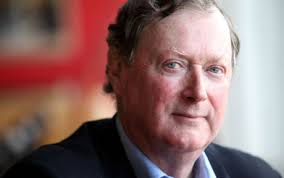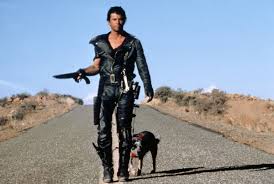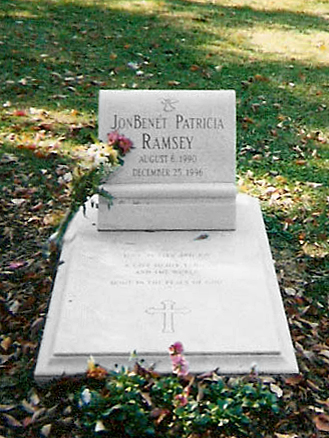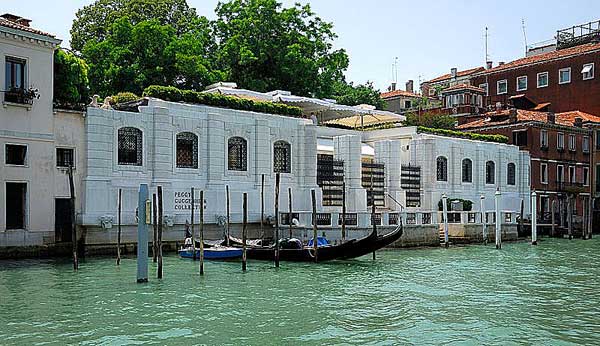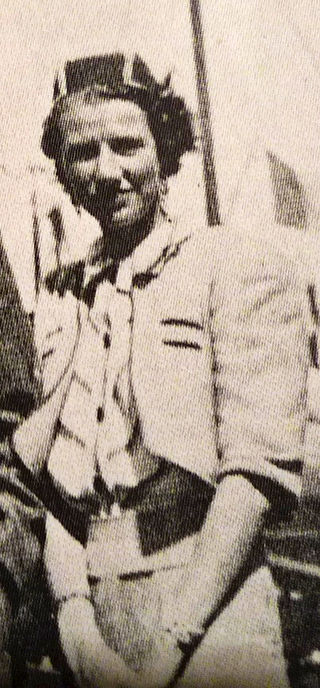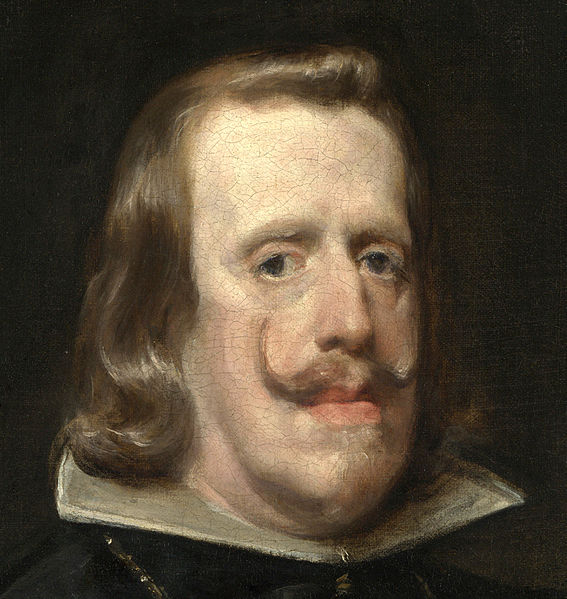The Varnished Culture's Thumbnail Reviews
Regularly added bite-sized reviews about Literature, Art, Music & Film.
Voltaire said the secret of being boring is to say everything.
We do not wish to say everything or see everything; life, though long is too short for that.
We hope you take these little syntheses in the spirit of shared enthusiasm.
Cold Cream: My Early Life & Other Mistakes
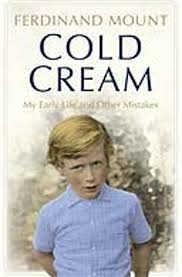
(by Ferdinand Mount) (2008)
It will come as no surprise to the reader that the “cold cream” of the title is the Pond’s cold cream used as a cure-all by the writer’s mother when he was a child. Somewhat less commonplace is the probable reason for Mrs Mount’s adherence to the unpleasant ointment – she earned a lifetime’s supply as a result of having spruiked it before her marriage – “Lady Julia Pakenham says she owes her flawless complexion to Pond’s Cold Cream”.
Lady Julia, the youngest daughter of the 5th Earl of Longford KC, married Robert Francis (“Robin”) Mount who, when at Oxford brought the Magdalen beagles home and ran them through the woods at his family’s Ancient Pile. Even given the restrictions of the entail, Robin Mount’s aversion to regular work (he was, rather oddly, a jockey) and the occasional modifying “relative” before the word, Ferdy’s references to his parents’ poverty are risible.
Moneyed or not, the Mount family was certainly connected. Ferdy Mount is, after all, Sir William Robert Ferdinand Mount, 3rd Baronet. “Cold Cream” is at times nothing more than an astonishing regurgitation of Debrett’s and the UK Who’s Who. Mount knows and is related to everyone. Just for example, his uncle is Anthony Powell, his cousins include Antonia Fraser and David Cameron. Despite the air of ensuring that we nobodies know that we are just that, Mount’s tone is also engaging, assured and lapidary. The book does lack some chronological rigour. We would like to know more about his wife, (also called Julia), who married Mount despite (according to his own account) the iceberg demeanour and indifference which bewildered and exasperated his girlfriends.
The references to his “coldness” may be part of Mount’s overdone self-deprecation or perhaps, (as he says), it was not until the death of his father, his marriage and his own fatherhood that he learned compassion and emotion. In an example of his best writing, Mount says this upon seeing his father shortly after his death:
“The direct experience of death as of birth has the power to open us up and expose our hearts. We feel at once intensely fragile and intensely alive. Now I had that direct experience I had missed out on it thirteen years earlier when I lay dry-eyed on my bed at 50 Zugspitzstrasse after receiving the telegrams about my mother. I had felt a similar rush of feeling three months earlier in Queen Charlotte’s Hospital when I held our first child in my arms, the awkward intensity recognisably the same though then provoked by joy rather than sadness. Mortality is as precious as it is tragic. How hard-hearted and dull-souled we would be if we were immortal. That is why the gods on Mount Olympus were so callous and bored, moved only by lust and anger, rather like a gated community of pop stars, emerging only at intervals to ravish and dazzle us lucky mortals.”
The latter part of the book is rather different. Up to this point, Mount has said little about his work as a journalist and author. Now the rollcall of the great and famous includes Margaret Thatcher and we walk with Mount through his induction and success as a policy maker (or is it a speech writer? Mount is never sure) for the Prime Minister. His portraits of Thatcher, Selwyn and others are cool and complex. For those interested in late 20th Century, early 21st Century British politics, this portion of Mount’s book is a must. For the rest of us, it becomes dull and lacks the loose whimsical zing of the parties, writers, artists, eccentrics, country houses and pretend idleness of the earlier portion which so dazzle us lucky mortals.
Continue Reading →Relax, Max

Mad Max Franchise (Dir. George Kennedy)
These highly influential and popular films are, truth to tell, shite. Oh I know, they represent a definitive textbook for the Stunt Man; they give employment to a bunch of Aussies (yay!); in the case of the first film in the series, it justifies awakening the city of Clunes; they combine great visual beauty along with nauseating ugliness; they tell the world of the practical effect of the Greens’ energy policy, but excrement they remain.

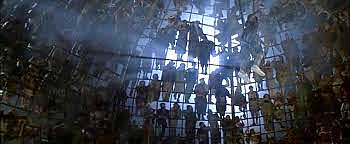 Listen! We blame no one. We’d rather watch these films than 97% of the cloacal mess showing at a cinema near you. We don’t think, from memory, that Max parades his buttocks. We applaud the defiance of CGI. We thank you for the mnemonic to avoid Broken Hill.
Listen! We blame no one. We’d rather watch these films than 97% of the cloacal mess showing at a cinema near you. We don’t think, from memory, that Max parades his buttocks. We applaud the defiance of CGI. We thank you for the mnemonic to avoid Broken Hill.
But don’t try to persuade the folks that there is any meaning here that can’t be found in the bottom of a box of Lolly Gobble Bliss Bombs. Or that this latest emanation is a masterpiece of feminist film-making, just because Charlize has smut on her face, packs a punch like Lionel Rose, and her retinue of model cuties are equally bellicose.
[L objects that there is something atavistic here, despite agreeing with these comments]:MINORITY REPORT
Gloriously ugly, bone-shattering post-steam-punk ultra-violence. Charlize screaming across a red desert in a way-beyond “The Cars that Ate Paris” murder truck under the post-apocalyptic billows of what we just know is minced plutonium. Lots of it. Chains, cufflinks, orcs. It has it all. Yes, THAT FILM is worth 4 out of 5 .But wait, that is not the film which we see, no, not by a long way. Within the first few minutes of this (otherwise) unremittingly hideous film we meet “The Breeders,” ludicrously beautiful women who will now accompany us across the grinding, churning, brutal sands until we arrive at an oil derrick of some sort. From which we are heralded by a lookout who (naturally) welcomes us by sliding down some metres of rope (naked, as you do, unless you are, oh, I don’t know – a man) and look out! it’s Megan Gale! Thank Goodness! I would not want those super-models to feel inferior in their designer rag-bikinis, perfect hair and air-brushed foundation (out here in the desert). I don’t feel bad! No! Well, I hear (men) cry, “you get Max to look at!”. Yo! That Tom Hardy whose soft, fat-lipped weak face we see now and then, for no reason, other than that the script, film name and franchise call for a “Max”? Bring back Mad Mel!
Continue Reading →Pendolino

Level 2, The Strand, Sydney, January 2016
Dawdling back from the Queen Victoria Building in George Street, we passed the rococo wonderland of The Strand.
Whilst loitering about the cigar and paraphernalia stores, we noticed a small sandwich board promising lunch. What we got was a beautiful dark interior, formal settings with a relaxed atmosphere, a good wine selection including import specials at reasonable prices….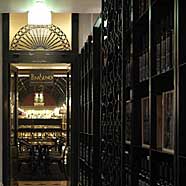 …and the best pasta dishes in town. Simple, elegant, unpretentious and service both assiduous and unobtrusive. We returned in August 2017 and it has maintained its standards.
…and the best pasta dishes in town. Simple, elegant, unpretentious and service both assiduous and unobtrusive. We returned in August 2017 and it has maintained its standards.
Continue Reading →
King Lear

(by William Shakespeare, 1606)
(Dir. Neil Armfield) (Sydney Theatre Company, January 2, 2016)
We offer a link to our favourite theatrical review site, Stage Noise, for the searching and wise verdict of this production (as at November 2015) by Diana Simmonds: Stage Noise review of King Lear
We have little with which to disagree and little to add, except for this:
Lear, in essence, might not bear proper staging. The individuals must be larger than life, and have real gravitas, so in contemporary terms, you require superstars for 7 of the roles. You need to treat the few jokes not as comedy, not even black comedy, but counter-comedy. The Fool’s so-called humour is really a running commentary on Lear’s foolishness in portioning out his kingdom according to prodigal measurements of demanded love, a stupidity so magnificent it could only come from a great king. Love looms large in this story but it looms in an unwholesome, displeasing way.
Lear has the playwright perfecting his instinctive nihilism, masked by setting it in ancient Albion and pleasing James I (first modern King of Great Britain) with its warning against disunity. (Today, although the Scottish National Party seeks to cut-up the kingdom and court the return of the wolves, this stirs only lukewarm ashes of fear). Long before Director Neil Armfield presents his blasted heath with rain, wind, thunder, bedraggled tinsel and a lunatic streaker (would he have trousered-up earlier), we audience have grasped the notion that here, all is raw, cold and desolate.
Lear’s late-onset dementia, even rendered by an actor as consummate as Geoffrey Rush, is not a great theatrical asset. That is, unless you are Shakespeare and devise an entertainment so bleak that the audience might commit suicide en masse when they perceive the totality of the play’s effect and text: the light will go out and not return – man has no meaning – life has no value – love is useless and malignant – the family unit is worse than worthless – dad, like god, is a monster who fathers and childs monsters – the human world is coming to an ugly point – nothing comes from and to nothing. Am I clear? As entertainment, this masterpiece of literature reeks!
So with the anti-play, one does one’s best and P really enjoyed this attempt by STC, with some heroic (and some indifferent) playing, nice settings of stormy heath and auroral beach, and lovely directorial flourishes. For example, at finis, the dead characters stand with a black mark on their hand, face or body (and bare-footed – it’s like an apocalyptic Abbey Road). This is good of Mr Armfield, since it enables us to recall the evening’s plentiful body count.
We are not so sure of Robyn Nevin as the Fool, wobbling on at the opening in the style of Marilyn Monroe, and returning à la Max Cullen from a Crawford cop drama. And unless you are so magisterial as to be feared, hated and loved in equal shares, it is well-nigh impossible for Lear to move the modern crowd when he enters with Cordelia dead in his arms. But kudos; for trying something new with this production, and for their passionate work, to Rush, and Eryn Jean Norvill, Helen Thomson and Helen Buday, as the daughters doomed not to outlast their culpable dad.
[Lear is also a timely shot in the fight over devolution.] Continue Reading →Chiswick at the Gallery

Visit most decent art galleries across the world and as you empty out of the rooms, especially those of a special exhibition, you’ll find a gift shop, a cloak room, and a bad crowded café. Go to the top floor and you might find a decent restaurant, and in Sydney, most likely, a view.
So it proved when we went to “The Greats” at NSW Art Gallery. Canny punters book, so we had to make do with a communal table but this was no problem – The Varnished Culture‘s table talk is invariably PC when in public and everyone, especially nearby, seemed nice.
Service was a little arty but the champers arrived on time and the food was quirky (in a good way). P was even tempted to try a cool and refreshing salad with watermelon, fetta, mint, cucumber and no flesh.
Continue Reading →The Martian
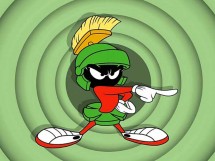
(Dir. Ridley Scott) (2015)
The one where the rocket takes off, but leaves the botanist behind by mistake, to tend his potatoes.
It is easy to overlook quibbles (about, say, wind-cut sand dunes and big storms in an almost airless planet, consequence-free exposure to massive radiation, etc. – in other words, the fact that Mars doesn’t look or act as presented here) if you get a compelling story with real wit and feeling attached. Unfortunately, we don’t. What we do get is the old Hollywood ‘bake ‘n’ shake’.
Recipe: Ingredients & method
Let’s mine a bit of Interstellar but this time, Matt Damon wants to be the good guy (he’s more at home that way). He’s also happy to defy Einstein by looking younger on return.
Add a dash of Castaway. You will need a sheet of tarpaulin with magical, voodoo qualities. And instead of a volleyball, try a space helmet bound in gaffer tape.
Drizzle a little Gravity into the mixture. You’ll need that at the conclusion to wake-up an audience by-now hungry for some real suspense.
We’re all greenies here in L.A., Burbank, and Culver City, so lets plunder some space farming hooey from Silent Running.
The mad dash into the wasteland to save one replaceable drifter? “Nothing is Written”? I hear the wind-shaped dunes of Lawrence of Arabia shifting….
Matt does some home surgery on his gym-cooked torso after he gets in the way of metaphysical space-junk. Diced shades of The Fugitive, and blanched Ronin.
We need to soften the sourness of the mix so sweeten with some cultural cross-referencing. Hence we give Sean Bean a ‘role’, allowing us to deploy a silly Lord of the Rings reference.
Back on Planet Stupid, the suits are damned if some little grommet is going to die on their watch! No way! No one dies today, or on any of the other 1213 solar days it takes to get to the end credits. So let’s ‘science the shit out of this’ and have some boffins drink too much freeze-dried coffee, scribble ‘the math’ in untidy notebooks, explain complex nonsense by using everyday objects, and fall back on Newtonian ‘slingshots’ to resolve the problem. In other words, stir in some zest from Apollo 13 (Jeff Daniels even dresses like it’s 1970) and simmer a salty portion of Event Horizon.
Gently combine over a lukewarm inspiration and garnish with the jogging-in-space-wheel scene from 2001.
Gather several extraordinary characters who evoke a genuine pioneering spirit; who solve problems by a teeth-gnashing series of trial and error; to whom impossible solutions fail to arrive; who die nobly, without the need to make documentaries about themselves; who cut out the whining. Set these aside and do not use.
Whip-in an ethnically diverse group of hipsters who are more intellectually, emotionally and ethically advanced than us, and braver to boot.
Combine into an easy, drippy, gelatinous mass and pipe into selected cinemas, and you get a space opera that is, pardon us, alien. Alien to Mars, and to Earthlings.
Continue Reading →Books About JonBenét

She was the beloved daughter of wealthy parents, and the only little girl in the world with that name. And we all know how things ended, only we don’t.
The two best books on the subject, to date, are Lawrence Schiller’s Perfect Murder, Perfect Town and Detective Steve Thomas’ JonBenét, Inside the Ramsey Murder Investigation.
There’s no need to outline the events which are known, or to detail the weirder aspects – the “War and Peace” of all ransom notes, the $118,000 ransom, the playwright across the road who wrote it all before it happened, the false confession, Burke’s voice on tape when it shouldn’t have been.
Detective Thomas makes no bones about his list of the most likely culprits – Patsy Ramsey, Patsy Ramsey, Patsy Ramsey and Patsy Ramsey. Schiller is more circumspect.
John and Patsy wrote a book, The Death of Innocence – JonBenét’s Parents Tell Their Story and it is quite convincing. A psychopath whose knew the family got into the house and killed JonBenét.
Joyce Carol Oates, who famously called JonBenét “the most famous little girl in the world” fictionalised the story in her novel, My Sister, My Love, where it’s ice-skating not beauty pageants, and although the mother and brother are implicated, it is all a horrible accident.
In one of the worst books I have ever read on the case, JonBenét Knows Evil Love, author Richard Rubacher posits that we can find the answer to the crime by payng intention to insanely cryptic clues in the note and in “backwards talking”. This pile of rubbish was so meretricious and poisonous that I burnt it.
Continue Reading →Peggy Guggenheim

The Life of an Art Addict (Anton Gill) (2002)
Peggy Guggenheim: Art Addict (Dir. Lisa Immordino Vreeland)
She was the Art Groupie par excellence, with more passion and panache than learning or taste, but she brought work to the attention of her rich friends and thereby both sustained talent and helped corrupt the art market. Gill’s work is like a non-fiction Apes of God: bitchy, knowing and a huge laugh.
Ms Vreeland, in presenting an essentially linear, coherent, and interesting documentary, has unearthed some biographical material taped in the late 1970s (the subject died in 1979) and padded it nicely with film, photos and interviews with various art figures. We caught this at a Dendys in Newtown, a sort of Sydney Fitzroy (very funky).
Mrs. Guggenheim had a surprisingly full and yet incredibly empty life, attended by tragedy, lots of casual sex and, in the arts, vicarious achievement. Yet her seminal role in putting modern art to the fore in the 1940s and two generations beyond cannot be denied.
Whether that is something to celebrate we leave, politely, to our readers. For what it is worth, there are only a handful of pieces presented here that can be said to commend themselves to posterity. Overall, abstract expressionism was not only a wrong turn in the visual arts (a kind of punk movement where alcohol-fuelled, personality-disordered incompetence became a bankable investment, controlled by charlatans), it can be confidently described as a cancerous sphincter in the body of art. See Mark Rothko (below) if you don’t believe us!
Everything is Happening

(by Michael Jacobs, with an introduction and coda by Ed Vulliamy) (2015)
Diego Velázquez (Summer 1599 – 6 August 1660), one of Spain’s greatest painters, created Las Meninas (“The Ladies in Waiting” or “Maids of Honour”) in 1656. A large work, a masterpiece of High Baroque, it seems to be the painter casting his patrons (King Philip IV and Queen Mariana) as a camera, they surveying the room in which Diego is painting them, with its royal domestic scene.
With brilliant use of light and shade, peerless brushwork and tasteful use of colour, Velázquez provides a series of highlights that float around the vanishing point(s), one a mirror reflection (of sitters? of the painting of the sitters?), one a gentleman hovering in the far doorway, one their daughter (the Infanta Margarita) with exquisitely attired attendants, and the painter himself, standing back from his big canvas as if to take stock, intensely contemplating the seated royals who, in our shoes, gaze back at the vista. Kenneth Clark in Civilisation called Las Meninas “The greatest of all pictures based on the facts of vision”.
This book (or idea for a book), however, suffers from the modern tendency to present The Author As The Story. Purporting to deconstruct and explain the picture, it reads uncomfortably like a (repetitive and reductive) memoir of obsession, and thus we perceive the danger of over-analysis, a creeping disease that can become acute in academia, and particularly when confronted by a work so teasingly and unambiguously enigmatic as Las Meninas. One recalls the incremental nature of this devilish trap, memorably charted by Michael Frayn in Headlong, where the protagonist follows an iconographic trail to its inevitable, futile, catastrophic conclusion.
Furthermore, the dead hand of Foucault is daubed on these pages, with its oafish structuralist meanderings, its smug join-the-dots certitude that social and historical context explained all artistic creation. So Mr Jacobs can’t eat what’s on his plate, because he lifted one side to see what was lurking under it. There is much talk of artists, their social position in Spain of the golden and less-than-golden-age, contemporary travelogue and some passing swipes at formal art theory, but not really much of Velázquez or his masterwork, and who can quibble about that? If, as Martin Mull reportedly said, writing about music is like dancing about architecture, writing about painting is like knitting an overture. One medium does not much complement the other.
Not to say there is nothing here of interest. Las Meninas is an interesting picture. A theory is posited where the courtier, José Nieto (with the matronymic Velázquez) loitering above the central far doorway, seems to look towards his namesake and show him the way towards the light of eternity. Once beyond the haven of royal patronage, there lies oblivion. This idea has additional poignancy because the author was dying and left a handful of notebooks from which this piece was concocted.
But a picture is an intimate, albeit anonymous, covenant, and we can set what terms take our fancy, and a single paragraph from E.H. Gombrich (mentioned in this book only in passing) in The Story of Art, is just as valuable and plausible as this entire volume:
“We may never know, but I should like to fancy that Velázquez has arrested a real moment of time long before the invention of the camera. Perhaps the princess was brought into the royal presence to relieve the boredom of the sitting and the King or Queen remarked to Velázquez that here was a worthy subject for his brush. The words spoken by the sovereign are always treated as a command and so we may owe this masterpiece to a passing wish which only Velázquez was able to turn into reality.”
Continue Reading →Unfaithful Music & Disappearing Ink
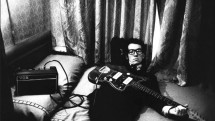
(By Elvis Costello) (2015)
We’ve been admiring EC from afar and occasionally up close, for a very long time. So we come to his autobiography with relish and trepidation. It is not as good as Speak Memory, the greatest autobiography ever penned, but it is hugely impressive – more a dense memory-book than a straight auto-biog, and much more concerned with music and music people than his own ego. He is obviously and rather charmingly challenged by autobiography, preferring the more oblique method of song lyrics and anecdotes, and saying of the process: “I don’t much care for the subject.”
This modesty is impressive, given EC’s certified genius, and almost makes one suspicious (what’s he hiding?) akin to Paul Bowles’ famous Without Stopping, re-named by readers “Without Telling.” Costello is unconcerned with telling his story as a linear ascent from obscure rags to veneration and riches – he jumps about, from thrashing acetates of the latest hits handed down by his musician father, including early Beatles hits, to jamming and writing songs with Paul McCartney decades later.
Boy! Did we say he jumps about? It’s almost stream of consciousness and of a monstrous Jimmy-Joyce length to boot. Full of inspired music trivia (do you know that the chap who wrote “Try a Little Tenderness” beat someone to a pulp in a bar?), family snapshots, erudite asides and left-leaning polemic, and while not great or even very good prose, it is great stuff – and even better, enhance its combination of the familiar and strange by playing a little Costello sample in the background – if you can abide EC as background.
Continue Reading →

